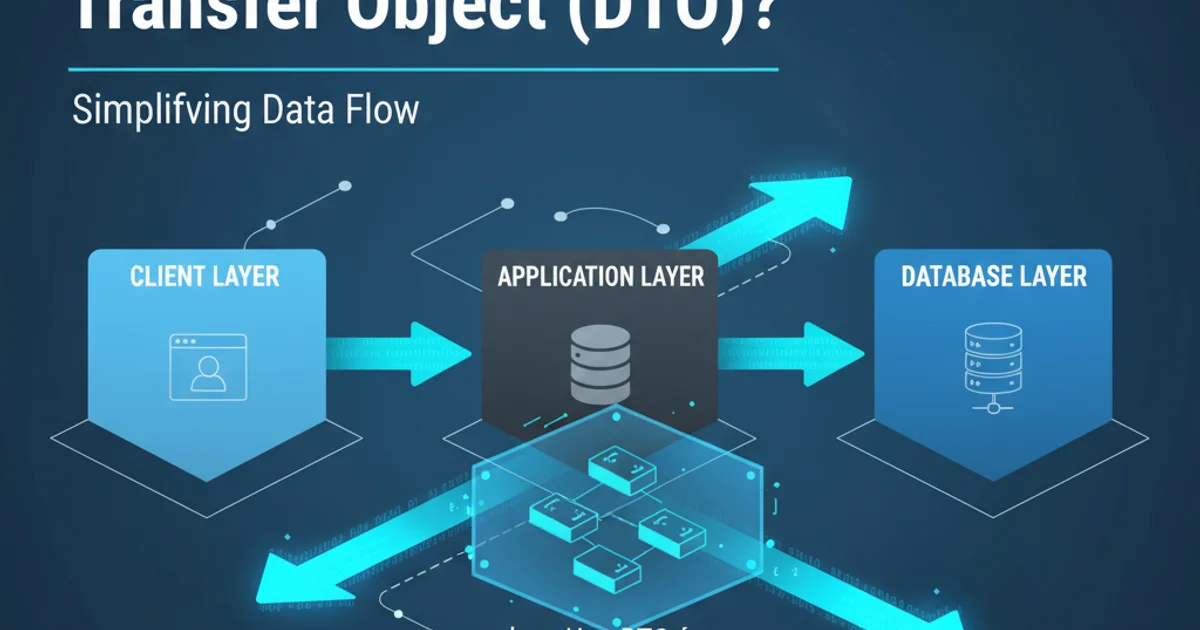What is a Data Transfer Object (DTO)?
Categories:
Understanding Data Transfer Objects (DTOs) in Software Architecture

Explore what Data Transfer Objects (DTOs) are, why they are used, and how they streamline data exchange between different layers of an application, improving performance and security.
In modern software development, especially within layered architectures like Model-View-Controller (MVC) or N-tier systems, efficient and secure data exchange between components is crucial. This is where Data Transfer Objects (DTOs) come into play. A DTO is a simple object that carries data between processes, often used to transfer data between the client and server, or between different layers within a server-side application. Unlike domain models or entities, DTOs typically contain no business logic or behavior; they are purely for data encapsulation.
What is a Data Transfer Object (DTO)?
A Data Transfer Object (DTO) is a design pattern used to encapsulate data for transfer across process boundaries. Its primary purpose is to reduce the number of remote calls by aggregating data that would otherwise be transferred individually. For instance, instead of making multiple calls to fetch a user's name, email, and address separately, a single DTO can carry all this information in one go. DTOs are particularly useful in scenarios involving web services, APIs, or any situation where data needs to be serialized and deserialized for transmission.
flowchart LR
Client --> |Request Data| Controller
Controller --> |Call Service| Service
Service --> |Fetch Entity| Repository
Repository --> |Return Entity| Service
Service --> |Map to DTO| DTO
DTO --> |Return DTO| Controller
Controller --> |Send DTO| ClientTypical data flow illustrating the role of a DTO in a layered architecture.
Why Use DTOs?
The adoption of DTOs offers several significant advantages in software architecture:
- Reduced Network Traffic: By bundling multiple data points into a single object, DTOs minimize the number of requests and responses over a network, which is especially beneficial in distributed systems or microservices architectures.
- Decoupling: DTOs help decouple the presentation layer (or client) from the domain model. This means changes to the internal structure of your domain entities don't necessarily require changes to the client-facing API, as long as the DTO contract remains stable.
- Security and Data Hiding: DTOs allow you to expose only the necessary data to the client, hiding sensitive internal fields of your domain entities. For example, a
Userentity might have apasswordHashfield, but theUserDTOsent to the client would omit it. - Simplified Data Validation: Validation logic can be applied directly to DTOs before they are mapped to domain entities, ensuring that incoming data meets specific criteria.
- Performance Optimization: Less data transferred and fewer calls translate directly to improved application performance and responsiveness.
public class User {
private Long id;
private String username;
private String email;
private String passwordHash; // Sensitive data
// ... other fields and business logic
// Getters and Setters
}
public class UserDTO {
private Long id;
private String username;
private String email;
// No passwordHash here
// Getters and Setters
public UserDTO(User user) {
this.id = user.getId();
this.username = user.getUsername();
this.email = user.getEmail();
}
}
Example of a User entity and its corresponding UserDTO in Java, demonstrating data hiding.
DTOs vs. Domain Models vs. View Models
It's common to confuse DTOs with other data-carrying objects like domain models or view models. Understanding their distinctions is key:
- Domain Model (Entity): Represents the core business concepts and data within your application. It often includes business logic, relationships with other entities, and persistence concerns. Domain models are typically rich in behavior.
- Data Transfer Object (DTO): A plain object used solely for transferring data between layers or processes. It contains no business logic and is designed to be easily serializable. Its structure might be a subset or aggregation of one or more domain models.
- View Model (VM): Specifically designed for the presentation layer (UI). A view model aggregates data from one or more DTOs or domain models, and sometimes includes UI-specific logic (e.g., formatting, validation for display). It's tailored to what the view needs to render.
In essence, domain models are for your business logic, DTOs are for data transport, and view models are for UI rendering.
classDiagram
class DomainModel {
+ dataFields
+ businessLogic()
+ relationships
}
class DTO {
+ dataFields
- noBusinessLogic
- noRelationships
}
class ViewModel {
+ dataFields
+ uiSpecificLogic()
+ formatting
}
DomainModel <|-- DTO : mapped to
DTO <|-- ViewModel : mapped toClass diagram illustrating the relationship and distinctions between Domain Models, DTOs, and View Models.